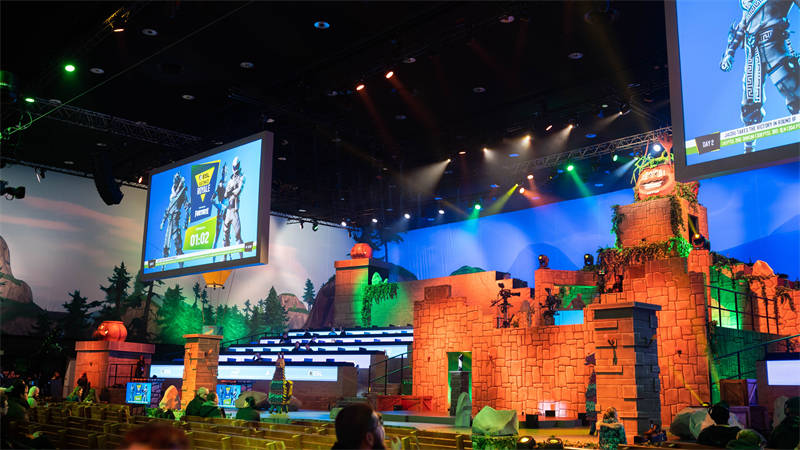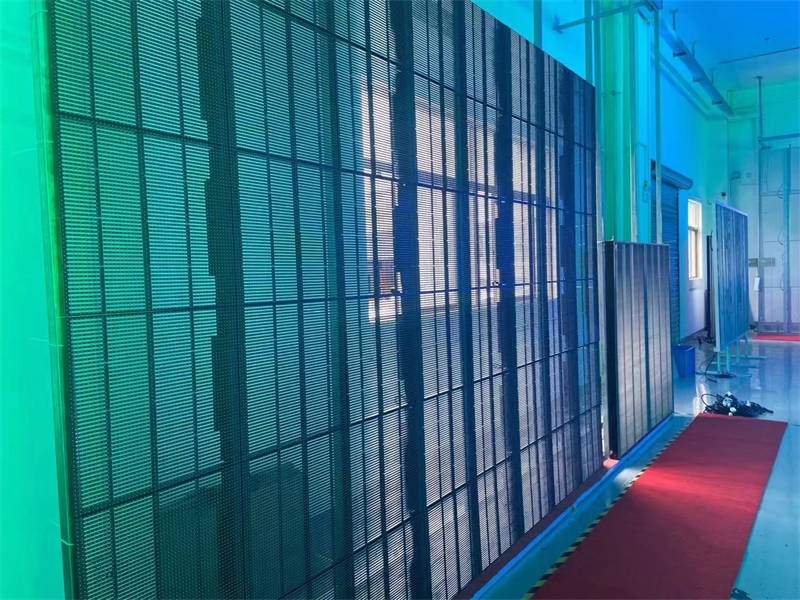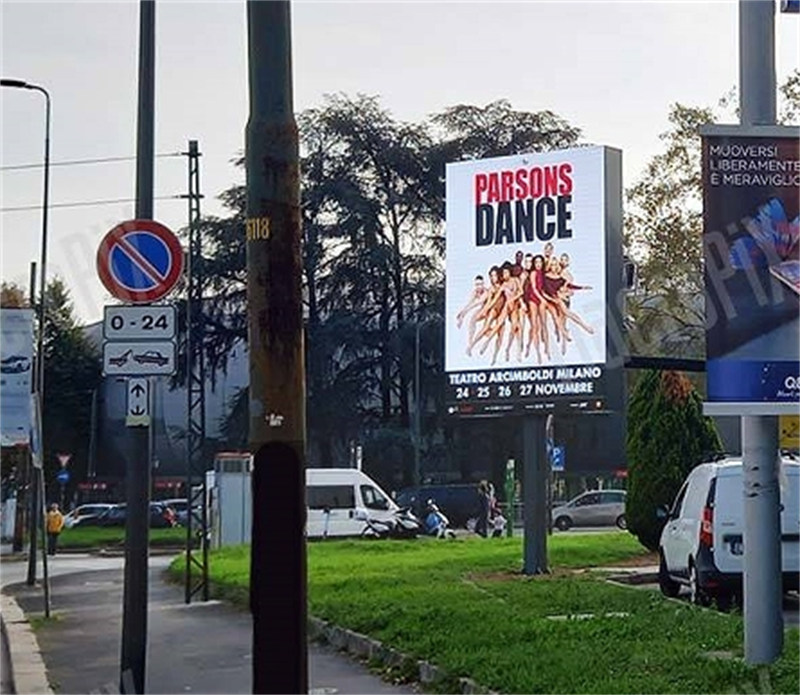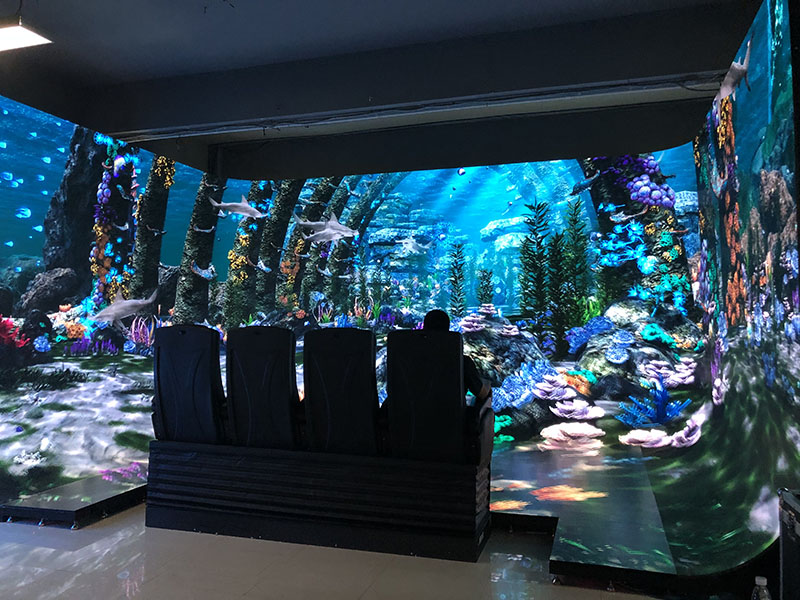Table of Contents
ToggleWhat is a Small Pixel Pitch LED Display?
A Small Pixel Pitch LED Display, also known as an ultra-fine pitch LED display, refers to a type of LED display with a very small distance between individual pixels. Pixel pitch refers to the distance between the centers of adjacent pixels, usually measured in millimeters. In the case of small pixel pitch LED displays, this distance is typically 2.5mm or less.
These displays are characterized by their high-definition resolution, capable of rendering images and videos with exceptional clarity, sharpness, and detail. They are commonly used in indoor environments where close viewing distances are common, such as retail stores, conference rooms, control rooms, and indoor advertising.

The use of small pixel pitch technology allows for the creation of seamless and immersive display walls without visible pixelation, even at close distances. This is achieved through pixel-level point control technology, which ensures precise control over the brightness, color reproduction, and uniformity of each individual pixel.
Some common pixel pitches for small pixel pitch LED displays include P2.5, P2.083, P1.923, P1.8, P1.667, P1.5, and P1.25. The smaller the pixel pitch, the higher the resolution and image quality, but also typically the higher the cost. Therefore, the choice of pixel pitch depends on factors such as viewing distance, budget, and desired image quality.
How Does Pixel Pitch Affect LED Displays?

As discussed previously, a smaller pixel pitch corresponds to a higher resolution on an LED display. Smaller pixel pitch allows for crisper images and borders when a screen is viewed from a lesser distance; the smaller the pixel pitch, the shorter the minimum viewing distance can be achieved for a particular device. However, this improved performance comes with its own downside. Smaller pixel pitch can only be achieved by investing in a more expensive LED display board.
Comparing fine pitch LED screens with traditional display
Comparing fine pitch LED screens with traditional display technologies like Rear-projection Cubes (RPC), LCD, and DLP (Digital Light Processing) can provide insights into their respective strengths and weaknesses:
- RPC vs. Fine Pitch LED:
- RPC technology is known for its ultra-high-definition resolution and stability, commonly used in control rooms and emergency command centers.
- Fine pitch LED screens offer advantages in clear colors, wider viewing angles, and seamless splicing capabilities.
- LED technology generally provides better performance in terms of image quality and versatility compared to RPC, making it suitable for critical applications requiring high-resolution visuals and continuous operation.
- LCD vs. Fine Pitch LED:
- Fine pitch LED screens have advantages in seamless splicing, longer lifespan, and flexibility.
- LED displays can seamlessly integrate to create large, high-resolution screens with excellent picture integrity.
- LCD displays may have advantages in terms of initial cost and delicacy of the picture, but LED screens offer superior performance in terms of image quality, scalability, and adaptability to different sizes and environments.
- DLP vs. Fine Pitch LED:
- DLP and LED are different display technologies with distinct technical parameters, display effects, and applications.
- Fine pitch LED screens typically offer better performance in terms of seamlessness, brightness, resolution, and wider application fields compared to DLP.
- While DLP may have a cost advantage in certain scenarios, particularly in the context of splicing walls, fine pitch LED screens provide superior image quality and flexibility.
In summary, fine pitch LED screens excel in providing high-resolution visuals, seamless splicing, and adaptability to various environments, making them a preferred choice for applications requiring superior image quality and versatility. While traditional display technologies like RPC, LCD, and DLP may offer certain advantages such as initial cost savings, fine pitch LED displays generally outperform them in terms of overall performance and suitability for modern visual display requirements.
Which Pixel Size is The Best?

Choosing the best pixel size for a LED display depends on several factors:
- Viewing Distance: Select the pixel pitch based on the distance between the audience and the display. Common industry formulas help determine the optimal viewing distance based on pixel pitch. For example, for LED full-color screens, the viewing distance can range from the pixel pitch (mm) × 500 to pixel pitch (mm) × 1000. The most suitable viewing distance typically ranges from pixel pitch (mm) × 3000 to pixel pitch (mm) × 1000.
- Budget: Smaller pixel pitches offer higher pixel density and better image quality but come with higher production costs due to a more refined production process and increased raw material input. Choosing a larger pixel pitch may be more cost-effective, especially if the audience is farther away from the display.
- Size Requirements: Consider the desired display size and resolution. For example, if aiming for a 4K display, the number of display modules required will vary depending on the pixel pitch. Smaller pixel pitches like P1.667 will contain more pixels within the same physical size compared to larger pixel pitches like P2.5, resulting in a more detailed image.
- Special Requirements: Some applications, such as virtual productions in cinematography or broadcast studios, have specific requirements. In these cases, smaller pixel pitch LED screens may be necessary to ensure the perfect presentation of media content, especially under camera equipment.
Ultimately, there is no universally “best” pixel size as it depends on the specific needs and constraints of each project, including viewing distance, budget, size requirements, and any special considerations for the application environment. It’s essential to carefully evaluate these factors to determine the most appropriate pixel pitch for your LED display project.
Applications of Fine Pixel Pitch LED Display

Fine pixel pitch LED displays have a wide range of applications across various industries due to their superior image quality, seamless integration, and versatility. Some of the key applications include:
- Broadcast Studios: Fine pixel pitch LED displays are commonly used in broadcast studios for on-air backgrounds, virtual sets, and video walls. Their high resolution, color accuracy, and seamless integration make them ideal for creating dynamic and visually stunning backgrounds for television programs, news broadcasts, and live events.
- Control Rooms: Control rooms in industries such as transportation, utilities, and security rely on fine pixel pitch LED displays for monitoring and managing critical operations. The displays provide operators with real-time information, surveillance footage, and data visualization in high resolution, allowing for quick decision-making and response to emergencies.
- Digital Signage: Fine pixel pitch LED displays are widely used in digital signage applications for advertising, branding, and information display in retail stores, shopping malls, airports, and transportation hubs. Their high brightness, wide viewing angles, and seamless integration allow for eye-catching and engaging content delivery to attract customers and convey messages effectively.
- Corporate Lobbies: Fine pixel pitch LED displays enhance the aesthetics of corporate lobbies and office spaces while serving as versatile communication tools for showcasing company branding, news updates, and interactive presentations. The displays create a modern and sophisticated ambiance, leaving a lasting impression on visitors and stakeholders.
- Command and Control Centers: Military, defense, and emergency response organizations use fine pixel pitch LED displays in command and control centers for monitoring and coordinating operations. The displays provide a comprehensive view of mission-critical data, maps, and video feeds in high resolution, enabling commanders to make informed decisions and respond swiftly to evolving situations.
- Educational Institutions: Fine pixel pitch LED displays are increasingly being adopted in educational institutions such as universities, colleges, and schools for interactive learning experiences, digital signage, and campus communication. The displays facilitate immersive presentations, collaborative learning activities, and campus-wide announcements, enhancing the overall learning environment and student engagement.
- Entertainment Venues: Fine pixel pitch LED displays are utilized in entertainment venues such as theaters, concert halls, stadiums, and arenas for immersive visual experiences, stage backdrops, and audience engagement. The displays create captivating visuals, dynamic lighting effects, and interactive content to enhance live performances, sporting events, and other entertainment productions.
Fine pixel pitch LED displays offer unparalleled image quality, seamless integration, and versatility, making them indispensable tools for a wide range of applications in industries ranging from broadcasting and control rooms to digital signage and entertainment.
How choose the right fine pixel pitch LED display
Choosing the right fine pixel pitch LED display involves considering several key factors to ensure that it meets your specific requirements and delivers the desired performance. Here’s a guide on how to choose a fine pixel pitch LED display:
- Define Your Requirements:
- Identify the specific application and purpose of the LED display (e.g., digital signage, broadcast studio, control room).
- Determine the viewing distance and viewing angle requirements.
- Consider environmental factors such as ambient light levels and installation space constraints.
- Select the Pixel Pitch:
- Choose the appropriate pixel pitch based on the viewing distance and desired image quality.
- For closer viewing distances or applications requiring high-resolution visuals, opt for smaller pixel pitches (e.g., P1.25, P1.5).
- For larger viewing distances or applications where image detail is less critical, larger pixel pitches (e.g., P2.0, P2.5) may be suitable.
- Consider Image Quality:
- Evaluate factors such as brightness, contrast ratio, color accuracy, and refresh rate to ensure optimal image quality.
- Select LED displays with high brightness levels for well-lit environments and outdoor applications.
- Look for displays with high contrast ratios and wide color gamuts to ensure vivid and lifelike visuals.
- Assess Display Size and Configuration:
- Determine the desired size and configuration of the LED display wall or screen.
- Consider the aspect ratio and resolution requirements based on the content to be displayed.
- Evaluate the scalability and flexibility of the LED display system to accommodate future expansion or reconfiguration needs.
- Evaluate Durability and Reliability:
- Choose LED displays with high-quality components and robust construction to ensure long-term durability and reliability.
- Look for displays with features such as dust-proof and moisture-resistant designs for outdoor and harsh environments.
- Consider the reputation and track record of the LED display manufacturer in terms of product reliability and customer support.
- Review Installation and Maintenance Requirements:
- Assess the ease of installation and maintenance of the LED display system.
- Look for displays with modular designs and front-serviceable panels for simplified installation, servicing, and component replacement.
- Consider factors such as power consumption, heat dissipation, and cooling requirements to ensure efficient operation and longevity.
- Evaluate Cost and Budget:
- Determine your budget constraints and balance them with the desired features and performance.
- Compare the total cost of ownership, including initial purchase price, installation costs, operating expenses, and maintenance expenses, over the lifespan of the LED display.
By carefully considering these factors and conducting thorough research, you can choose the fine pixel pitch LED display that best meets your needs and delivers exceptional performance for your specific application. Additionally, consulting with LED display experts and suppliers can provide valuable insights and assistance in selecting the right display solution.

SightLED is a professional LED display manufacturer, providing high-quality and customizable indoor and outdoor LED displays for advertising, events, sports, and more. With over 12 years of experience and certifications such as ISO9001-2015, CE, and TUV, we ensure reliable post-sale services and customer satisfaction. Trust us to meet your specific needs and provide long-term quality services.






